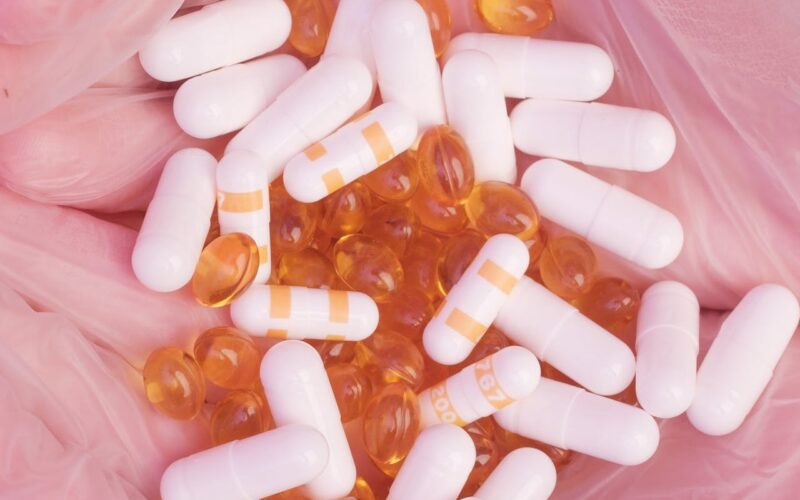Antibiotics are powerful tools in combating bacterial infections, but they often come with a significant downside: disruption of the gut microbiome. This disruption can lead to a range of gastrointestinal issues, including diarrhea, yeast infections, and in severe cases, Clostridioides difficile infections. To combat these side effects, many health professionals recommend taking probiotics during and after antibiotic treatment. The best probiotics to take with antibiotics are those that can survive the antibiotic onslaught and help restore the balance of gut bacteria, thereby mitigating negative digestive effects and supporting overall gut health.
However, not all probiotics are created equal when it comes to their effectiveness alongside antibiotics. Some may even be rendered ineffective if they cannot withstand the antibiotic treatment. It’s crucial to choose the right probiotics that have been proven to be resilient and can thrive even during antibiotic use. This guide provides essential information on selecting effective probiotic strains that can complement antibiotic treatments and help maintain gut health post-antibiotic treatment. By understanding which probiotics work best with specific antibiotics, patients can better manage their health and minimize potential gastrointestinal disturbances associated with antibiotic use.
Choosing Probiotics During Antibiotic Treatment
Effective Strains
When selecting a probiotic to take alongside antibiotics, it’s essential to choose strains that are known for their resistance to the effects of antibiotics. The following strains are particularly effective due to their resilience and specific beneficial properties:
- Lactobacillus rhamnosus GG: This is one of the most extensively studied probiotics for antibiotic therapy. It has a high survival rate in the acidic environment of the stomach and is not commonly affected by antibiotics. Research indicates that Lactobacillus rhamnosus GG can significantly reduce the incidence of antibiotic-associated diarrhea and is also effective in preventing Clostridioides difficile (C. diff) infections, which can be a serious complication following antibiotic treatment.
- Saccharomyces boulardii: Like Lactobacillus rhamnosus GG, Saccharomyces boulardii is a robust yeast probiotic that survives stomach acid and antibiotic exposure. It is particularly noted for its efficacy in reducing antibiotic-associated diarrhea and for its role in the prevention of C. diff infections.
- Lactobacillus acidophilus: This probiotic strain helps maintain a balanced gut microbiota during antibiotic use, preventing the overgrowth of harmful bacteria. Lactobacillus acidophilus is beneficial for overall digestive health and supports the immune system, which can be compromised during and after antibiotic use.
- Bifidobacterium bifidum: Effective in maintaining gut health, this strain helps inhibit the growth of harmful bacteria that may proliferate when the natural balance of gut flora is disrupted by antibiotics. Bifidobacterium bifidum aids in the digestion of fibers and complex carbohydrates, and contributes to the overall health of the gastrointestinal tract.
These probiotic strains have shown promise not only in countering the negative effects of antibiotics but also in enhancing gut health and resilience. By choosing probiotics that are specifically known to withstand antibiotics, you can significantly improve your gastrointestinal health during and after antibiotic treatment. This approach helps maintain a robust and balanced microbiome, reducing the likelihood of diarrhea and other gastrointestinal issues associated with antibiotic use.
Ineffective Strains
Some probiotic strains might not withstand antibiotic treatment and therefore would not be effective if taken simultaneously with antibiotics. These generally include:
- Non-spore-forming probiotics: Many common probiotic strains fall into this category and can be killed by antibiotics if taken together, negating their beneficial effects.
Timing and Dosage
To maximize effectiveness, probiotics should be taken a few hours after antibiotics—this helps ensure that fewer probiotic bacteria are killed by the antibiotic in the gut. It’s generally advised to continue taking probiotics for at least two weeks after completing an antibiotic course, although extending this period can further benefit gut health.
Post-Antibiotic Care
After completing a course of antibiotics, it’s crucial to continue taking probiotics to help fully restore the natural balance of gut flora. The antibiotics may have eliminated both harmful and beneficial bacteria, leading to a state of dysbiosis or microbial imbalance. Continuing probiotic supplementation can expedite the repopulation of beneficial bacteria, aiding in the recovery of a healthy gut microbiome. In addition to probiotics, adopting a diet rich in fibers and prebiotics is beneficial. Prebiotics serve as food for beneficial gut bacteria, promoting their growth and activity. Foods rich in prebiotics include bananas, onions, garlic, and asparagus. These dietary fibers help stimulate the growth of healthy bacteria, further supporting the restoration process of the gut flora.
Moreover, incorporating fermented foods into your diet can enhance gut health by providing a variety of natural probiotics. Fermented foods such as yogurt, kefir, sauerkraut, and kombucha are rich in live cultures that contribute to the diversity and vitality of the gut microbiome. These foods not only offer a direct supply of beneficial bacteria but also help create an environment in the gut that supports the growth of existing probiotic strains. By continuing with probiotics and integrating these nutrient-rich foods into your daily diet, you can significantly boost gut health, enhance digestive function, and potentially improve overall well-being.
Conclusion
Choosing the right probiotics during and after antibiotic treatment is crucial for maintaining gut health and preventing potential side effects of antibiotics. Opting for strains known for their resilience against antibiotics and ensuring proper timing can make a significant difference in their effectiveness. Moreover, maintaining a diet that supports gut health after antibiotics is essential for restoring and maintaining a balanced gut microbiome. Always consult with a healthcare provider to choose the most appropriate probiotic strains and dietary changes based on your specific health needs and the type of antibiotics you are taking.


